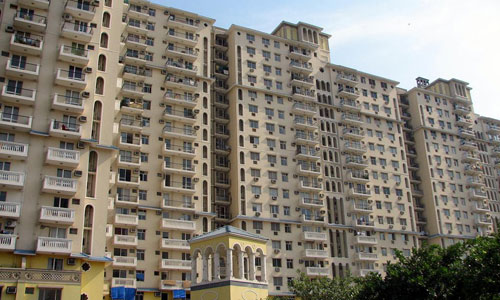News Point: Investors are catalysts to ghost cities; they can’t drive real estate market.
 It is true that investors are project riders in the real estate market and hence a perception gains ground that housing market is a trading commodity between developers and the investors.
It is true that investors are project riders in the real estate market and hence a perception gains ground that housing market is a trading commodity between developers and the investors.
However, a closer look on the Indian housing market suggests that such a perception is just an outside view and even though the presence of investors as project riders cannot be denied, the investors alone cannot keep the wheels of housing market moving. Had it not been the case the Indian housing market would have only produced ghost cities.
Proponents of this school of thought point out that the period of 2004 to 2008 needs to be evaluated to understand how end users are catalyst to meteoric rise of Indian property market. After all, that was the time when the big money was really made out in real estate; that was the time people made ten times money.
Why that happened because that was the time when the economy was opened up and FDI and other foreign funds came in and financial services were setting up offices here, there was enough job opportunities and salaries increased drastically, stock markets reached to 20,000.
It is often pointed out that the term investors is misleading in the real estate market of India. The critics more often than not look at the lenders who are putting in money as anchors with a debt structure that promises them 18 per 24 per cent returns.
But they are not investors as their concern is never execution of the project. The investors are the ones who are buying the inventory not for the self use but future appreciation potential.
Sahil Shah, Principal Partner of Square Yards Consulting maintains that the anomaly is part of the business structure as this is one of the investments where the power of leveraging is very much reality of the real estate game. “I can book a flat at 10 per cent and spread my payment for four or five years. By that time the property may be appreciating the double. So, with a subvention kind of plan I can make my money grow by double or triple by just paying 10 per cent.”
Sunny Bijlani, Director of Supreme Universal asserts that end users are the catalysts to price appreciation and not the investors. According to him, investors are not more than 20-25 per cent across the micro markets of India. If it would have been all investor driven then we would have got a real estate market like Dubai.
“The end users are today being affected by the macro economic situation that is affecting their purchasing power. When the economy attracts the foreign funds and grows then it leads to positive sentiment. Today, the problem is that no developer can guarantee the kind of IRR that an investor is looking for,” says Bijlani.
As a contrary view, Sahil Shah, Principal Partner, Square Yard Consulting says the lack of regulation and transparency has ensured that the investors are able to trade freely. For them it is the only place where they can park their black money, other than gold.
“In the last 20 years every other sector has got organised and you just cannot park your black money the way you do in the real estate business. Then, in most of the cities the demand is so high compared to supply that the exit is always possible at a higher price point. Moreover, the developers’ innovation in terms of attracting funds has also been very exciting for the investors,” says Shah.
However, the fact remains that the markets where the investors are on prowl are more speculative markets and sitting on the higher inventory level. On the contrary, the markets which are mostly end user driven have lower level of inventory and have less chances of crash or correction.
Of course, because there are investors on prowl and there are very many ghost cities with piles of inventory across the country, the perception that investors are driving the Indian housing market has gained ground. Now whether they alone can drive the market is debatable and even more debatable is the fact that for how long they can be project drivers.
But the fact of the matter is that in many places like Delhi-NCR the schemes are like 5:80:15 and the initial 5 per cent is refunded by the developer to the buyer. Worse even, when a developer says that 10 per cent is the booking amount and he is going to split it into 12 months then one is inviting the speculators. The RBI does not permit that but the developers are openly advertising it.
Critics point out that even a rickshaw puller can buy with such schemes. There is a new scheme floated that says pay only 2 per cent at the time of the booking and the bank will take care of the rest. So, in this 20:80 scheme 20 per cent has been split into 10 parts. And banks are releasing the payment.
Doesn’t it sound like inviting one and all to be investor or speculator? It does!
By: Ravi Sinha





